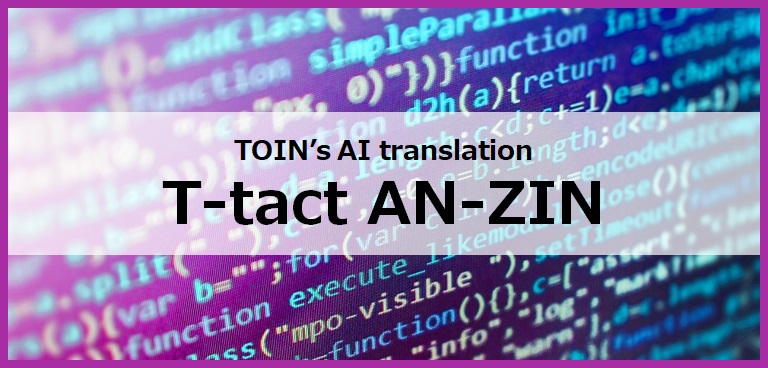What is Post-Editing? Advantages and Effective Use Strategies

With the increasing opportunities for utilizing machine translation, including AI translation, the term "post-editing" has become heard more frequently. However, many people may not have a clear understanding of the meaning of post-editing, and even if they have a vague understanding, they might feel reluctant to ask for clarification at this point.
This article explains the role, advantages, and effective use strategies for post-editing when used in combination with AI translation tools, which have become so popular.
What is Post-Editing?
"Post-editing" refers to the process in which a human reviews and corrects translations generated by machine translation. In post-editing, corrections are made for omissions and mistranslations, as well as adjustments for fluency and style. Additionally, content modifications may be made to align with the context based on supplementary information such as reference materials.
In recent years, the accuracy of machine translation tools has improved remarkably; however, they cannot be relied on to verify the correctness of the translated text. Therefore, the determination of whether corrections are needed, whether they require minor adjustments or more significant revisions, is left to the individual conducting the post-editing, that is, the post-editor.
As the use of machine translation continues to advance, the role of the post-editing process has become increasingly important.
Role and Advantages of Post-Editing
The role of post-editing is to enhance the accuracy of translations generated by machine translation. The responsibilities of post-editing go beyond merely checking for omissions and mistranslations. Adjusting subtle nuances and tailoring translations to fit the context are crucial human corrections that ultimately determine the quality of the final translation.
With the globalization of business, the opportunities for translation have increased, and there is a growing need for multilingual translations, not just limited to English and Japanese as in the past. Consequently, traditional translation methods are becoming insufficient, requiring the exploration of new approaches. This has led to the increased use of machine translation tools in recent years.
Machine translation offers remarkable speed when it comes to translation tasks; however, it comes with a disadvantage in terms of concerns regarding accuracy. The combination of machine translation and post-editing has effectively alleviated these accuracy concerns while still enabling rapid translations.
Full Post-Editing and Light Post-Editing
There are two types of post-editing: full post-editing and light post-editing. Full post-editing involves making corrections to achieve a level that is comparable to or near that of human translation. There is an international standard for post-editing called "ISO 18587," and the post-editing correction process follows its guidelines.
Light post-editing involves making corrections that allow for a general understanding of the content and can be completed in a shorter time compared to full post-editing. However, light post-editing is not covered by the ISO 18587 international standard.
Both full post-editing and light post-editing have their respective advantages, so the most suitable post-editing approach should be chosen based on the intended purpose and deadlines.
Points to Consider when Requesting Post-Editing: Effective Use Strategies
Post-editing is an effective method for alleviating concerns regarding the accuracy of machine translation. However, if customers are to fully benefit from the significant reduction in translation time provided by machine translation, they must also consider the desired quality of the output. The reason for this is that making an inappropriate choice in post-editing can lead to dissatisfaction due to quality issues that do not meet expectations, as well as turnaround times that are longer than originally anticipated.
The combination of machine translation and post-editing appears to be considerably quicker than traditional translation. However, when high quality is required, it may take a similar amount of time as traditional translation.
Therefore, it is advisable to use different types of translation depending on where it will be used. If deadlines and cost take priority over quality, it may be enough to perform light post-editing to ensure that the intended meaning is conveyed. And, if a high level of accuracy is required, then full post-editing should be utilized to enhance the quality. By effectively utilizing both types, one can leverage the primary advantage of machine translation—speed—while also achieving satisfactory accuracy in the translations.
Toin’s Post-Editing
At Toin, our experienced post-editors have advanced translation skills and post-editing skills, from light post-editing to full post-editing, and can quickly optimize machine-translated text according to your needs and translation objectives. Our full post-editing services are based on ISO 18587, the international standard for post-editing. We process AI-translated text through full post-editing by post-editors with specialized knowledge in the field to enhance its accuracy. Following bilingual checks, the translation is revised to the same level of quality as human translation tailored to meet the specific purpose of use. For urgent deadlines, we can provide light post-editing.
If you are considering implementing a high-quality post-editing service, please feel free to contact us at Toin.
Summary
We provide total translation services by professional translators that only a translation company with a long history can offer, including various types of translation of documents and videos, post-editing, and other services. For any translation-related inquiries, from the use of AI machine translation tools to various types of translations, please feel free to contact TOIN.
Click here for information about post-editing:

Click here for more information about TOIN's AI translation service, T-tact AN-ZIN®:

▶About the Author
TOIN Corporation Marketing Department
Hiromi Ishikawa
Joined TOIN Corporation in 1990 and was engaged in the production of manuals. Her wide range of duties include everything from transcribing Japanese manuscripts to directing the production of multilingual manuals.
From 2002, her main focus has been on localization project management, and she has been responsible for facilitating many of the company's major projects. Since 2009, she has been working in the Marketing Department, where she has been involved in marketing as well as advertising and public relations activities. She has been a member of the Board of Directors of the Japan Translation Federation and the Asia-Pacific Machine Translation Association since 2018.









